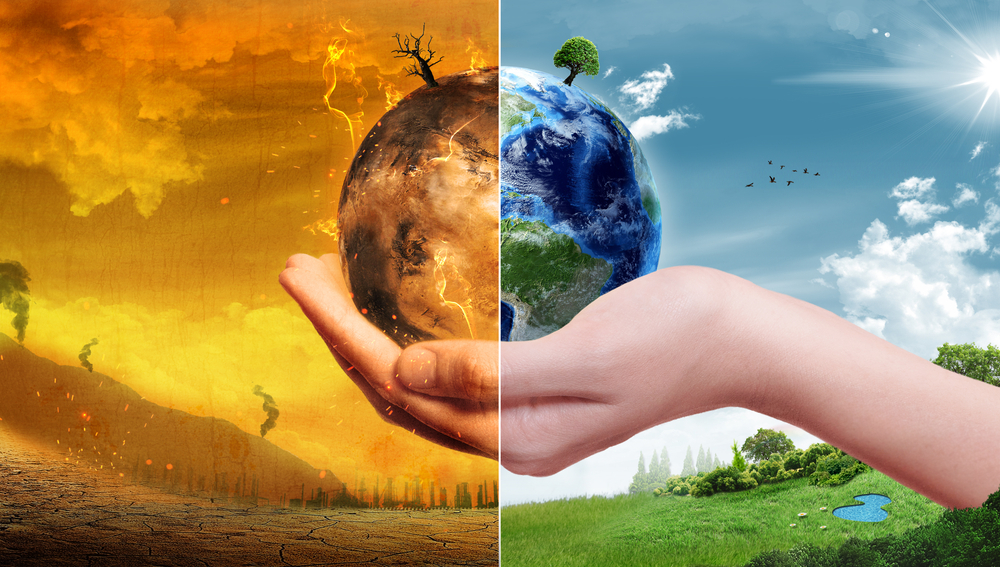Is COVID-19 a Message from Mother Nature?
In today’s society, no matter where you are in the world, it's fast moving and non-stop. This is especially an issue in large, more-developed cities. Because people are always out and about going to work, traveling on vacation or just to explore the world, taking the children to practice or music lessons, or simply going to a friend’s house a few blocks over, pollution is a very prominent issue in the world, and has been for countless years.
The Coronavirus (COVID-19) pandemic has spread around the world, and has put everyone’s life on pause. There is no more traffic, rushing to work in the morning, weekend plans, or meaningless drives around town. Mother Nature has had enough of the pollution and noise that comes from everyone and forced us to take a step back and breathe, in a very unfortunate way.
COVID-19 has taken over the news and it is the only thing people have been talking about all over the world. According to an article from Environmental Protection Association, “Both the coronavirus and climate change are problems of the here and now, both have the potential to take human lives, and both have even graver consequences in the foreseeable future,” which is very true considering they are both very dangerous to humans. It is very hard for people to realize the damage climate change will do because it is such a slow and unnoticeable change to the eye, and seems like it can only really be portrayed in data and numbers.
The COVID-19 pandemic, on the other hand, is spreading quickly and is happening now having people isolated in their homes because of it brings it to their attention and creates fear to make them want change as soon as possible. Many people think that climate change is a myth when it is actually happening. For example, because of the warming of the earth, the ice caps are melting, creating more water in the world’s oceans. This is making sea levels rise which can put coastal cities underwater in years to come. This will not only take away the homes of many people, but animals living in these colder environments and are dependent on the ice caps are already losing their habitats, if they haven’t already.
Since the start of social distancing, air quality in most cities has improved drastically. In the Northeast US, it has dropped 30% since travel has slowed, according to CNBC. In China factories were shuttered and the streets were cleared causing people to stay home. As a result there were less cars and factories creating pollution. Tourist destinations like Venice, Italy saw changes in the canal. "The water now looks clearer because there is less traffic on the canals, allowing the sediment to stay at the bottom," according to the Venice mayor’s office. "It's because there is less boat traffic that usually brings sediment to the top of the water's surface." Air pollution has decreased since the start of the pandemic in Italy as well. Since there is less commotion in the streets, animals have shown their faces in their rightful habitats, now that people are not scaring them away from loud noise and crowdedness.
These changes in the environment certainly will not be permanent. According to a UN News article, the UN Environment chief says that COVID-19 is not a silver lining for the climate. Long-term shifts are the only thing that can change carbon dioxide levels in the atmosphere. Since what has already happened can only be classified as “short-term” change, people need to try to maintain these green habits to create positive, long-term effects for the environment. There has not been much talk about the negative impacts this pandemic can have as well. Disposable surgical masks that doctors and first responders are using cannot be reused so when they are thrown away, they may end up in oceans. Environmental group OceansAsia conducted a survey trip to the Soko’s islands in Hong Kong where large amounts of these masks were found washed up on shore.
Energy Live News interviewed Gary Stokes, OceanAsia’s Founder, and he made a statement saying, “We have found 70 discarded masks within 100 meters of the beach and an additional 30 masks when we returned a week later.” It may not seem like a lot, but these numbers can add up. “Over time, the team has seen the odd mask here and now, however this time they were all along the high tide line and foreshore with new arrivals coming in on the current. When you suddenly have a population of seven million people wearing one to two masks per day the amount of trash generated is going to be substantial,” said Strokes. Marine plastic pollution is a major issue and these masks are made of polypropylene, which does not break down easily. About one hundred thousand marine mammals and turtles are killed by plastic, along with over a million seabirds each year.
Once social isolation has ended and life starts to go back to normal, people are going to slowly go right back into their old routine because of so much time that was lost. More cars will be out on the road, planes will be flying again, and more factories will start up again putting the environment back where it was before, but there may be a small percentage of the population that tries to continue to help the environment.







